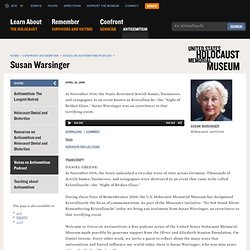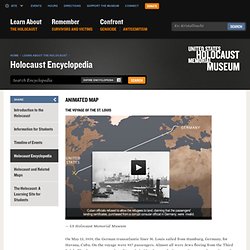

Yes, It’s Fair to Compare the Plight of the Syrians to the Plight of the Jews. Here’s Why. Last week, Peter Shulman, an associate professor of American history at Case Western Reserve University, caused a political stir when he tweeted results from a Fortune Magazine poll dated July 1938.

“What’s your attitude towards allowing German, Austrian & other political refugees to come into the US?” Fortune asked its survey audience. Over two-thirds of respondents answered in the negative. Shulman’s tweet went viral, igniting a spirited debate about whether opposition to welcoming Syrian refugees is morally or situationally equivalent to American indifference in the 1930s toward Jewish victims of the Nazi state. In what can only be described as a sharp reversal of prevailing norms, many conservatives, who these days seem inclined to liken every government overreach to Nazism, are incensed by the analogy, while many liberals, who have grown accustomed to rolling their eyes each time that Bill Kristol invokes the Munich Agreement, are sticking by it.
Story Continued Below.
Current Events. Johanna Gerechter Neumann. Susan Warsinger. DANIEL GREENE: In November 1938, the Nazis unleashed a two-day wave of riots across Germany.

Thousands of Jewish homes, businesses, and synagogues were destroyed in an event that came to be called Kristallnacht—the "Night of Broken Glass. " During these Days of Remembrance 2008, the U.S. Holocaust Memorial Museum has designated Kristallnacht the focus of commemoration. As part of the Museum's initiative: "Do Not Stand Silent: Remembering Kristallnacht" today we bring you testimony from Susan Warsinger, an eyewitness to that terrifying event. Welcome to Voices on Antisemitism, a free podcast series of the United States Holocaust Memorial Museum made possible by generous support from the Oliver and Elizabeth Stanton Foundation.
SUSAN WARSINGER: It was November the 10th, 1938, and my brother and I were sleeping in our bedroom and all of a sudden some bricks and rocks were being thrown through our bedroom window. The Voyage of the St. Louis. The Voyage of the St.

Louis — US Holocaust Memorial Museum On May 13, 1939, the German transatlantic liner St. Louis sailed from Hamburg, Germany, for Havana, Cuba. On the voyage were 937 passengers. Transcript With Hitler's rise to power, the Nazis began the systematic persecution of Jews in Germany. Nazi violence and the destruction of Jewish-owned property spread throughout many cities during the Kristallnacht pogrom of November 1938. Universe of Obligation.
German Identity. Conformity, Obedience, and Propaganda. Antisemitism. World War I. Present Day Racism. Identity and Society. THE HANGMAN. German History.